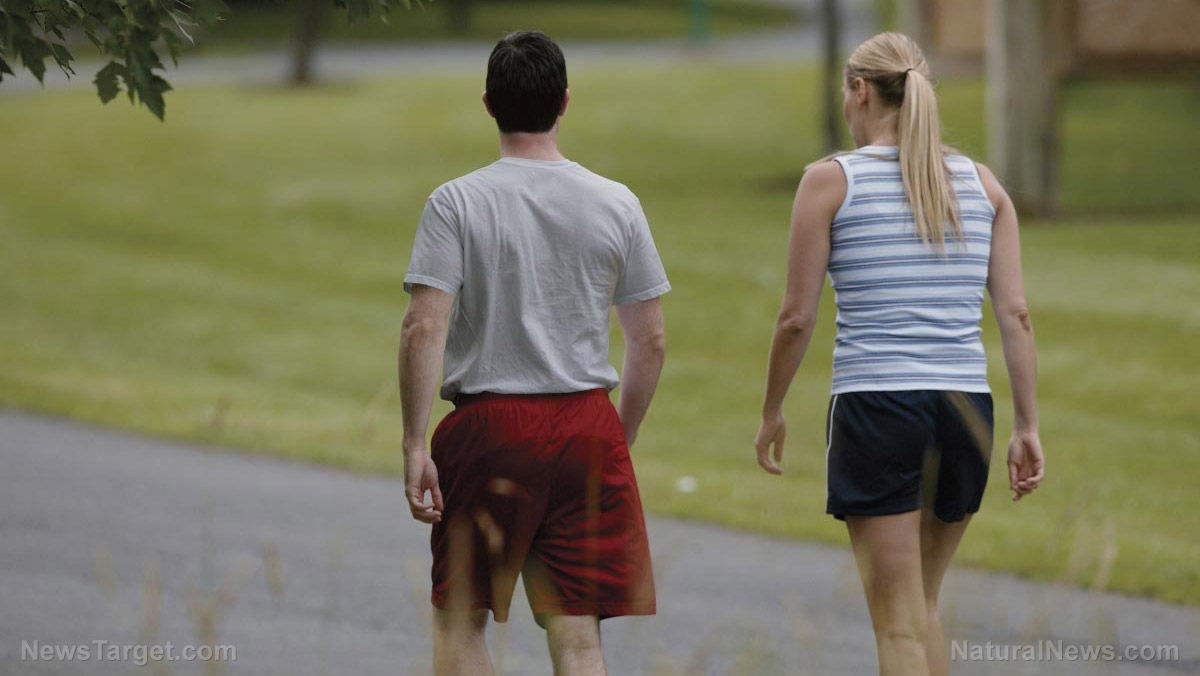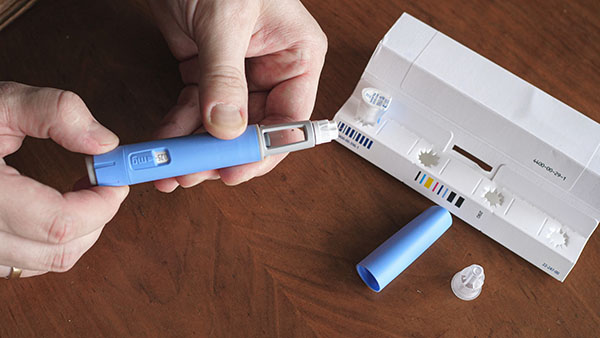Post-meal walk: A simple, science-backed strategy to tame blood sugar spikes
06/04/2025 / By Ava Grace

- Emerging research shows that walking after eating helps manage glucose levels, reducing the risk of diabetes, obesity and metabolic disorders.
- Nearly 100 million Americans have prediabetes and uncontrolled glucose is linked to Alzheimer’s, heart disease and other health issues. Movement is a key solution alongside diet.
- Physical activity pulls glucose into muscles, lowering blood sugar spikes without relying heavily on insulin. Even light walking (2-5 minutes) has benefits, with 15-30 minutes being optimal.
- Post-meal walks improve digestion, heart health, weight management and stress levels by lowering cortisol.
- Walking can’t fully counteract poor dietary choices, and individual responses vary. However, it’s a simple, accessible habit backed by science and tradition.
For generations, Americans have been told to take it easy after a meal – to let the body rest and digest. But emerging science suggests that the opposite may be far healthier.
A brisk walk after eating, long dismissed as mere habit or a way to ease fullness, is now proving to be a powerful tool in regulating blood sugar. Taming blood glucose levels is a critical factor in preventing diabetes, obesity and other metabolic disorders. With nearly 100 million Americans already prediabetic and millions more struggling with blood sugar imbalances, this simple lifestyle shift could be a game-changer.
The numbers don’t lie: 38.4 million Americans have diabetes, and an additional 96 million – roughly one in three adults – have prediabetes. Uncontrolled blood sugar doesn’t just lead to diabetes; it’s linked to Alzheimer’s, heart disease, chronic fatigue and infertility. (Related: A prescription you can afford: A 30-minute walk every day can reduce your blood pressure as much as a pill.)
Enter the post-meal walk – a low-effort, high-reward habit that helps the body process glucose more efficiently. Unlike restrictive diets that demand cutting out favorite foods, walking is an easier solution. It doesn’t require deprivation, just a little extra effort.
The carbohydrates consumed when eating break down into glucose, flooding the bloodstream. Normally, insulin helps shuttle this glucose into cells for energy. But when glucose spikes too high after sugary or carb-heavy meals, the body struggles to keep up, leading to insulin resistance over time.
Walking changes that equation. Physical activity increases demand for glucose in the muscles, pulling sugar from the bloodstream without requiring as much insulin. Registered dietitian and metabolic expert L.J. Amaral explains that even light movement — like a casual stroll — boosts glucose uptake, preventing dangerous spikes.
The optimal post-meal walk: Timing, pace and duration
Not all walks are created equal. Walking within 30 minutes of eating is ideal, though benefits persist up to two hours after a meal. A brisk walk – where conversation is possible but singing isn’t – delivers the best glucose-lowering effects. Just two to five minutes can make a difference, but 15 to 30 minutes maximizes benefits.
A study found that a 30-minute brisk walk immediately after a meal is highly effective in lowering post-meal blood sugar spikes. Another study in Sports Medicine confirmed that even short walks had measurable benefits.
Walking after meals isn’t just about glucose control. Studies link this habit to:
- Better digestion: Gentle movement stimulates the digestive tract, reducing bloating.
- Heart health: Post-meal walks lower blood pressure and improves circulation.
- Weight management: Walking immediately after meals burns calories more efficiently than waiting an hour.
- Stress reduction: A brief stroll can lower cortisol, a hormone that exacerbates blood sugar imbalances.
Before reaching for dessert with the assumption that a walk will negate the damage, be warned. Walking helps, but it’s not a free pass. While movement blunts glucose spikes, it can’t fully counteract a sugar overload – especially from processed foods that trigger inflammation.
Individual responses vary, too. Factors like gut microbiome composition and metabolic health influence how effectively walking regulates blood sugar. Continuous glucose monitors (CGMs) can provide personalized insights, but for most people, the takeaway is simple. Move after meals, but don’t rely on exercise to excuse poor dietary choices.
Walking after meals isn’t a new idea. Cultures worldwide have long embraced post-dinner strolls not as a medical prescription, but as a natural part of daily life. Modern science is now catching up to what tradition already knew: Movement is medicine.
Visit PreventDiabetes.news for more similar stories.
Watch Dr. Richard Schulze explaining why walking is the best exercise in this clip.
This video is from the Health Freedom Now channel on Brighteon.com
More related stories:
Walking after a meal can help prevent diabetes, experts say.
For postmenopausal ladies: Try walking downhill after every meal to maintain bone health.
Walking dos and don’ts: Real ways to lose weight walking.
Sources include:
Submit a correction >>
Tagged Under:
alternative medicine, blood glucose, blood sugar, exercise, health science, Men's Fitness, natural cures, natural health, natural medicine, Naturopathy, post-meal walk, prevent diabetes, remedies, walking, Women's Fitness
This article may contain statements that reflect the opinion of the author





















